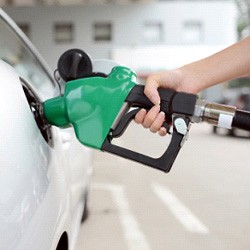Unfortunately, there’s not much we can do to control the price at the pump, but don’t worry, there are ways to increase fuel efficiency and get the most of each tank of petrol. Use these tips for more mileage between fill-ups as well as more money in your pocket.
Get Better Fuel Efficiency
How to Save at the Pump
- Get regular tune-ups
- Keep tires properly inflated
- Maintain proper tire alignment
- Slow down
- Brake less
- Reduce air conditioner use

Care for Your Car
Get regular tune-ups to be sure you’re not losing on fuel economy. Some vehicle problems can seriously decrease your fuel economy and should be taken care of. Replacing a faulty oxygen sensor, for example, can improve mileage by up to 40%!
Keeping tyres properly inflated also helps conserve fuel and money. Mileage can be lowered up to 0.3% for every one-PSI drop in pressure in all four tyres if they are underinflated. Check every month that all your tyres (even your spare) meet the vehicle manufacturer’s recommended tyre pressure listed in your vehicle owner’s manual. Remember to check pressure when the tyres are cold, meaning the vehicle has been parked for at least three hours or has driven less than 2 kilometres at moderate speed.
Keeping tyres correctly aligned improves mileage as well as prevents irregular tyre wear and extends tyre life. Tyres that are improperly aligned can result in as much as a 10% decrease in fuel efficiency, meaning more money out of your pocket spent on wasted petrol.
Drive with Diligence
Slow down! Consider this: Each vehicle reaches its optimal fuel economy at different speed ranges but usually mileage begins to quickly diminish at speeds above 80km/h.
Brake lesser. Every time we step on the brakes, we’re essentially wasting the acceleration we’ve already gained. By anticipating the need to stop and coasting a bit before coming to a standstill, we can make the most of the car’s momentum.
While many factors affect fuel economy in hot weather, running your vehicle’s air conditioning and open windows are two big contributors. To help offset this (and keep your passengers comfortable!) we recommend rolling your windows down at low speeds to keep cool and run your air conditioning when traveling at highway speeds.
Go the Extra Mile with Ecopia
Buying a more fuel efficient tyre is one more way to increase fuel economy. Specially engineered with low rolling resistance, Bridgestone Ecopia tyres minimise wasted energy, increasing mileage by up to 11km per tank. A low rolling resistance tyre will go further than a conventional tyre with the same amount of energy input. Find the low rolling resistance Ecopia tire for your car, and start saving!*
*Based on TUV Rheinland Chassis Dynamometer test according to UNECE-R83 and UNECE-R101.
- Vehicle: Toyota Camry 2.0G,
- Fuel Tank: 70L,
- Tyre size: 215/60R16,
- Inflation pressure: 230kpa,
- Drive condition: Urban (City)
Actual results may vary based on proper tyre maintenance, vehicle, driving style and road conditions.
-
Brake Pad Materials: What’s the Difference?
Brake Pad Materials: What’s the Difference?
Organic, Ceramic or Metallic? Different vehicles and driving styles call for different brake pad materials. What material best suits your needs?
Click to Learn More -
10 Driving Tips for New Drivers
10 Driving Tips for New Drivers
Getting your first driver's license is an exciting step toward independence and adulthood, but it's also a big responsibility. Learn how to balance this new freedom with caution and safe behavior.
Click to Learn More -
The Worst Road Surfaces To Drive On
The Worst Road Surfaces To Drive On
Poor road surfaces can cause an array of problems - from burst tyres and warped wheels, or in more severe cases, broken suspension springs and damaged shock absorbers. Find out the four road surfaces that are terrible to drive on, and the damage they can cause.
Click to Learn More
-
Brake Pad Materials: What’s the Difference?
Brake Pad Materials: What’s the Difference?
Organic, Ceramic or Metallic? Different vehicles and driving styles call for different brake pad materials. What material best suits your needs?
Click to Learn More -
10 Driving Tips for New Drivers
10 Driving Tips for New Drivers
Getting your first driver's license is an exciting step toward independence and adulthood, but it's also a big responsibility. Learn how to balance this new freedom with caution and safe behavior.
Click to Learn More -
The Worst Road Surfaces To Drive On
The Worst Road Surfaces To Drive On
Poor road surfaces can cause an array of problems - from burst tyres and warped wheels, or in more severe cases, broken suspension springs and damaged shock absorbers. Find out the four road surfaces that are terrible to drive on, and the damage they can cause.
Click to Learn More